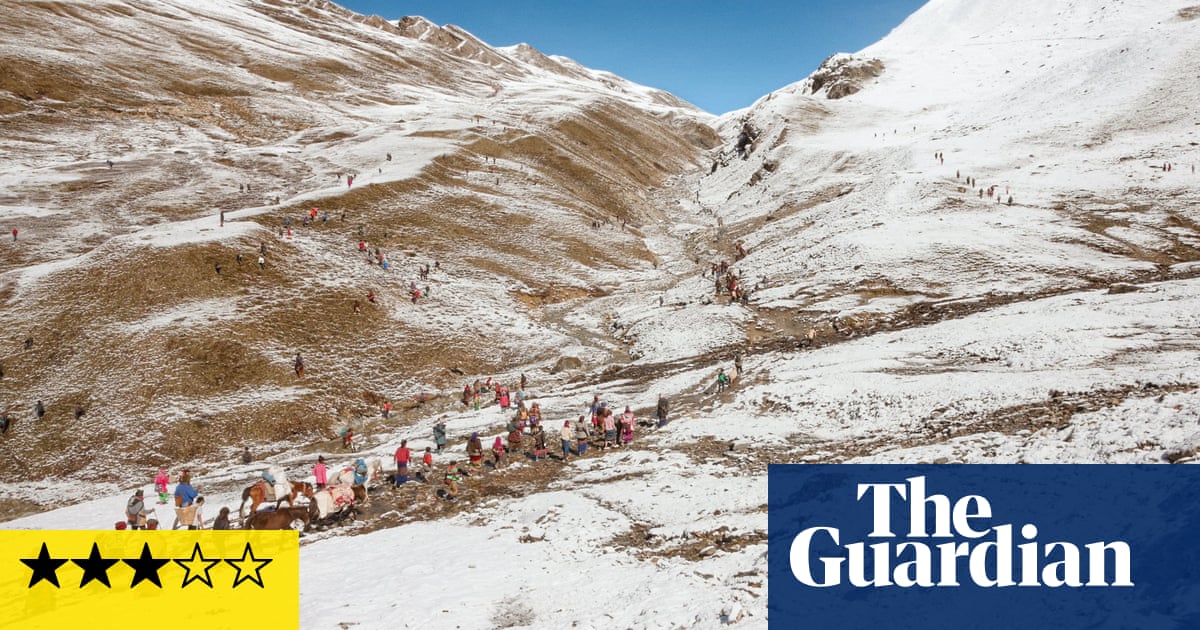
Like me, you may think of the Japanese artist Katsushika Hokusai, whose long and brilliantly productive life ended in 1849, and see a blast of blue. The sensual colours of his woodblock prints, those exquisite shades of sea and sky, are what stay with you. But the British Museum’s new show strips away those seductive colours and reduces Hokusai to black and white. It’s a daring thing to do.
As a story of detective work and rediscovery, this show is a sensational event. In June 2019, a set of 103 drawings mistakenly attributed to another artist went on sale in Paris. Expert dealer Israel Goldman recognised this as a lost body of work by Hokusai and the British Museum’s authority Timothy Clark agreed – so the museum bought them. It’s a rare good news story at a challenging time. But if you come expecting a blockbuster you may be surprised to find a sombre, low-lit show in the museum’s drawings gallery. Stick with it. The rewards are massive.
Hokusai created these ink drawings in the late 1820s for a visual encyclopedia that aimed to show literally “everything”. What a fantastically Borgesian idea, a book that contains the whole planet. It is all the wackier because Japan in the Edo period strictly limited all contact with the outside world. Hokusai’s information on China and India is enjoyably unreliable. The book was never finished – which is why these masterpieces in ink on paper survive, for they would have been destroyed in transferring the designs to woodblocks for printing.
Studying Hokusai as a draughtsman instead of colour printmaker puts him in direct conversation with the European tradition in which, since the Renaissance, drawings have been preserved as the purest products of the artist’s hand. That was also true in China – but not among the colour woodblock printmakers of early 19th-century Edo, who were popular artists working for the market. So this haul of Hokusai originals is a rarity to treasure.
The show is staged next to one of the world’s greatest prints and drawings collections whose treasures include Michelangelo’s sketches for the Sistine ceiling. It is also where Albrecht Dürer’s rhinoceros lives (not the print, the original sketch).
Hokusai’s drawings of everything include a lovable Indian elephant that could be his answer to Dürer’s rhino. Just like the German artist, he marvels at an exotic beast. It lowers its head to the ground in comic exhaustion, as if tired of the weight of its tusks and trunk. Its skin is wrinkled and ancient, its size so vast it makes homunculi of its attendants. But where Dürer aimed for science, Hokusai is playful and exuberant. His lines are free and swift.
These drawings are the culmination of a rich sketching process. Hokusai was proud of his sketches, even though few from his hand survive. He reproduced them in books he called Hokusai Manga (meaning pictures). The curators can’t resist references to modern manga. A drawing of a wicked king being killed by lightning has a ker-pow graphic boldness. Dazzling straight ink lines radiate from the explosion. But this is no comic. The intense dynamism Hokusai creates, and even more miraculously, the sense of bright searing light he makes you feel just by leaving a still white circle at the centre of his inky turbulence, resembles Rubens and Caravaggio. Except they needed colour to complete the illusion and Hokusai achieves it without.
Then it dawns on you. Hokusai is doing something no one on earth had done before. Consider the way he draws water, with little abstract curly lines, repeated in cascades. A funny drawing here of a bear under a waterfall shows its bemused face being overwhelmed by these rippled lines. No European artist in the 1820s had even dreamed of distilling nature in such a stylised shorthand. Hokusai worked in a tradition of semi-abstract, formalised landscape that went back to medieval China, but broke with the past in his eye for the sudden and new.
In his drawings of India, he depicts people running from a sandstorm, heads down, legs leaping through space. Nature and society, in this vision, are unstable realms. In one sketch, the eighth-century Buddhist monk Chuanzi Decheng, who worked as a boatman and gave his passengers lessons afloat, pushes another monk into the water as the hapless victim is trying to solve a riddle: Hokusai shows feet flying in the air as he slips under the waves.
According to the story, monk Jiashan found enlightenment from his watery shock. Hokusai’s art enlightens us in a similar way. He urges us to accept the flow of life, to relish its comedy and endure its tragedy. Is this a Buddhist insight? He belonged to a Buddhist sect, took his name from its teachings, and his drawings of Buddhist saints and stories have a simple, moving immediacy.
This gives a new philosophical depth to the foamy chaos engulfing those little fishing boats in The Great Wave, which is here in all its blue and white glory. Out of his personal meditations on flux and change, Hokusai created the first art that we recognise as capturing our modern condition. “All that is solid melts into air,” Karl Marx would say of modern life, but Hokusai drew it before him.
Hokusai: The Great Picture Book of Everything is at the British Museum, London, 30 September to 30 January.












